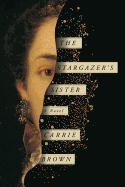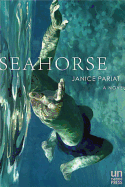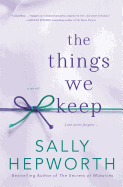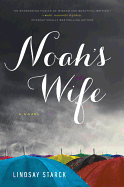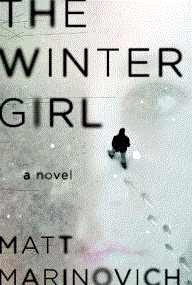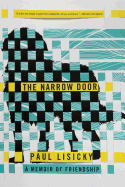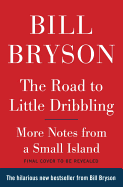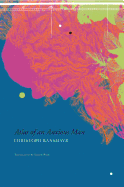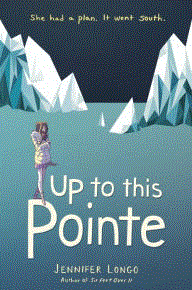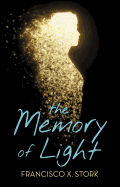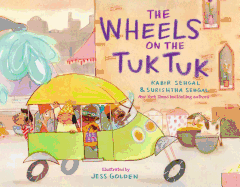_(Medium).jpg) |
| photo: Victoria McHugh Photography |
Lindsay Starck was born in Wisconsin and raised, she says, in the Milwaukee Public Library. She studied literature at Yale and creative writing at Notre Dame. She is editor-in-chief of Carolina Quarterly and writes and teaches in Chapel Hill, N.C., where she lives with her husband and their dog. Noah's Wife is her first novel. Our review is below.
Although you've pulled elements from the biblical story of Noah, you've definitely told your own story. How did you keep the two in balance?
I started with a number of questions about the flood story. What sort of woman, I wondered, would be willing to abandon her community and follow her husband into a giant floating zoo? What if she were afraid of reptiles or allergic to cats? How could she continue to believe in Noah if she could not see the signs that he saw? If she were given a voice, what would she say?
From the beginning, my intention was to use the flood story more as a point of departure than as a template. The most obvious elements I borrowed from the biblical account are Noah and his wife, the rain, and the animals. But I also used the story in subtler, more indirect ways. While most versions have the animals walking two by two into the ark, for example, in my novel the most important "pairings" are those between people: spouses, friends, parents, children.
Another example: In the biblical account, God is so disappointed with the world that he destroys it--but first he saves the best part of it. I was interested in what my characters would save from destruction, if they could. Mrs. McGinn wants to save her town, Noah's wife wants to save her husband, Dr. Yu wants to save her father. So I'm working with the idea of "salvation" in a very broad sense.
In short, while I'm not "retelling" the flood story, I do see myself engaging directly with its themes: faith, disappointment, destruction, and renewal. But for me these themes are most interesting when applied to human relationships, whereas the biblical account is focused on the divine.
Noah's Wife is filled with great supporting characters--the Roman expatriate, the misanthropic zookeeper, the commanding matriarch, the young woman desperate to escape to a new life.
At its core, the novel is a story about a "minor character"--a woman so marginal to the flood story that in the Bible she is not even given a name--who becomes a protagonist. Questions I asked myself while writing included: What does it mean to play a supporting role to someone else? How much of our identities are defined by other people? And what do we do if we think they've got us wrong?
To explore these issues, I filled the novel with a cast of "minor" characters who would typically play a supporting role to Noah's wife but who possess such strong personalities and motivations of their own that they sometimes take over her story. The idea was that the size and significance of a person's role in this story, in any story, depends on the perspective you take.
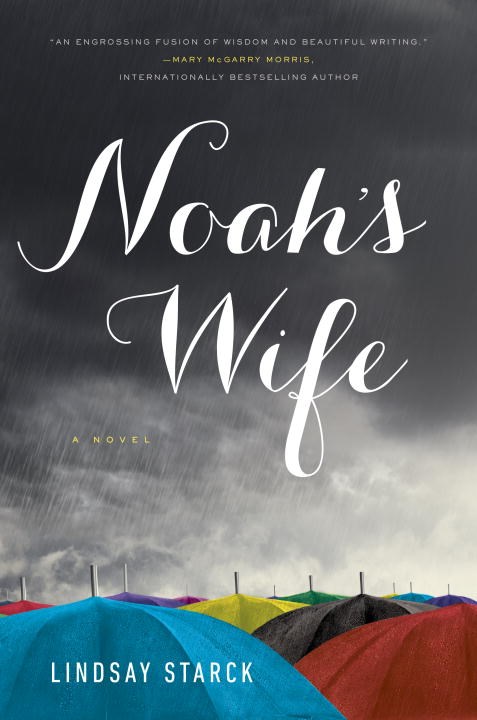 The mention of Noah's wife riffling through a card catalogue made me notice this story had no screens in sight. What made you decide to leave out digital connectivity?
The mention of Noah's wife riffling through a card catalogue made me notice this story had no screens in sight. What made you decide to leave out digital connectivity?
Most immediately it was a decision that had to do with plot: because it was important that the townspeople feel an increasing sense of isolation, I needed to keep cell phones and the Internet out of the story.
But in a deeper sense the dated details--TV sets with antennas, corded telephones making "long-distance calls," paper maps pulled from a car's glove box--helped me create the kind of tightly bound, living, breathing community that was vital to my story. Sometimes our constant connectedness to the digital avatars of our friends and family means that we are less connected to them in real life. My characters don't have the option of digital media. They have to face each other every day, in person, with all the frustration that such familiarity can entail.
I also wanted the story to have a timeless, mythic feel, and so I tried to loosen its connections to the real world.
If you had to take in an animal from a flooded zoo as the characters do, which would it be and why?
When I was growing up, I wanted to become a veterinarian--preferably a large-animal vet like James Herriot (I read all of his books!). The unique human-animal bond that emerged between the townspeople and their creatures might be my way of vicariously living out that childhood dream.
Although I've definitely dreamed about having a pet fox, my favorite human-animal pair in the novel is Mauro with his peacocks. There, we see the birds helping him as much as he helps them. Mauro feeds them and shelters them, and in return the peacocks take him under their wing (do forgive the pun). They ease his anxious heart.
So maybe I'd take the peacocks, for that reason. Although I'm quite content with my golden retriever mix, Fenway, who takes his job as my companion very seriously. He calms me and looks out for me better than any peacocks ever could!
The idea of faith recurs throughout the story. What does faith mean to you?
The idea of faith is important to me because I'm the sort of person who needs to feel as though she is always in control of her situation--a classic type-A personality--and faith is a kind of letting go. It's an acknowledgment that much of what happens in our daily lives is out of our control, whether that be the weather (the rain!) or the thoughts and actions of the people we think we know the best: our spouses, our parents, our children. Faith is an ongoing process, a constant reminder that not everything is knowable or predictable. It is also, I would like to think, a recognition of the beauty in uncertainty.
In many ways, each step of the writing process has been an act of faith. There were weeks when I felt that the manuscript was a total disaster; and yet I had to trust that the story would emerge from my stacks of messy drafts. During the editing process, I learned to accept--even embrace!--the idea that the input of others would strengthen my voice rather than silence it. The months before publication were a kind of slow letting go, as well.... I've felt a lot of anxiety but also a sense of relief at finally releasing the story into the world. Now the book belongs as much to its readers as it does to me. --Jaclyn Fulwood
Lindsay Starck: The Beauty in Uncertainty
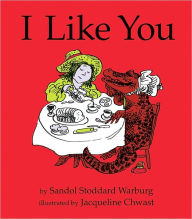 When customers ask for Valentine's Day gift advice, Cristin Stickles from New York City's McNally Jackson Books stands by the classic little red square book I Like You (Houghton Mifflin Harcourt) by Sandol Stoddard Warburg, illustrated by Jacqueline Chwast. And she's always caught off guard, she says, by how many lovelorn people come in to the bookstore around February 14 looking for Shel Silverstein's The Missing Piece (Harper). She raves about the beautiful collages in I Carry Your Heart with Me (Cameron & Co.) by e.e. cummings, illustrated by Mati McDonough, and also suggests Sandra Boynton's Your Personal Penguin (Workman)--"I want to be your Personal Penguin/ I want to walk right by your side"--as a disarming declaration of love.
When customers ask for Valentine's Day gift advice, Cristin Stickles from New York City's McNally Jackson Books stands by the classic little red square book I Like You (Houghton Mifflin Harcourt) by Sandol Stoddard Warburg, illustrated by Jacqueline Chwast. And she's always caught off guard, she says, by how many lovelorn people come in to the bookstore around February 14 looking for Shel Silverstein's The Missing Piece (Harper). She raves about the beautiful collages in I Carry Your Heart with Me (Cameron & Co.) by e.e. cummings, illustrated by Mati McDonough, and also suggests Sandra Boynton's Your Personal Penguin (Workman)--"I want to be your Personal Penguin/ I want to walk right by your side"--as a disarming declaration of love.



_(Medium).jpg)
 The mention of Noah's wife riffling through a card catalogue made me notice this story had no screens in sight. What made you decide to leave out digital connectivity?
The mention of Noah's wife riffling through a card catalogue made me notice this story had no screens in sight. What made you decide to leave out digital connectivity?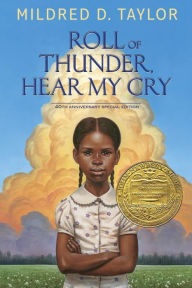 Song of the Trees came from the manuscript Taylor submitted to a 1974 writing contest hosted by the Council on Interracial Books. Her submission won the African-American segment of the contest, and readers of all ages have since been enriched by young Cassie Logan's accounts of her family's struggles. In the spirit of that original contest, Penguin Young Readers and
Song of the Trees came from the manuscript Taylor submitted to a 1974 writing contest hosted by the Council on Interracial Books. Her submission won the African-American segment of the contest, and readers of all ages have since been enriched by young Cassie Logan's accounts of her family's struggles. In the spirit of that original contest, Penguin Young Readers and 